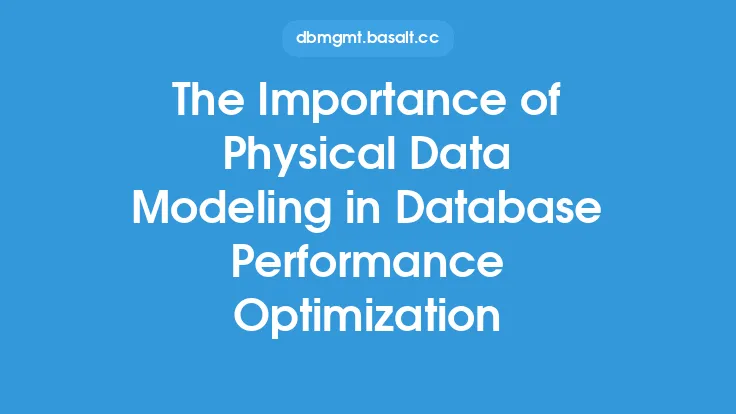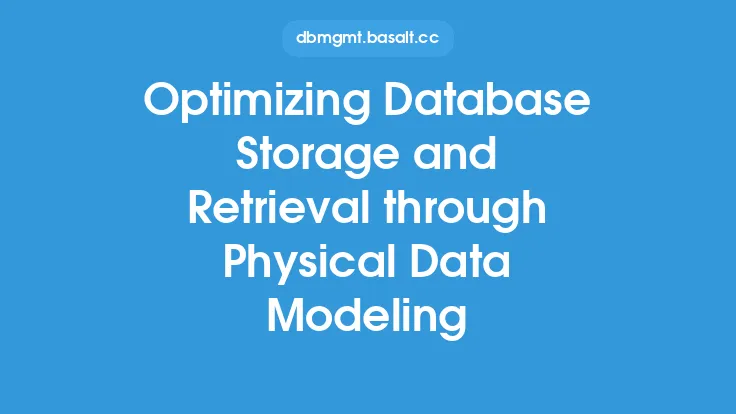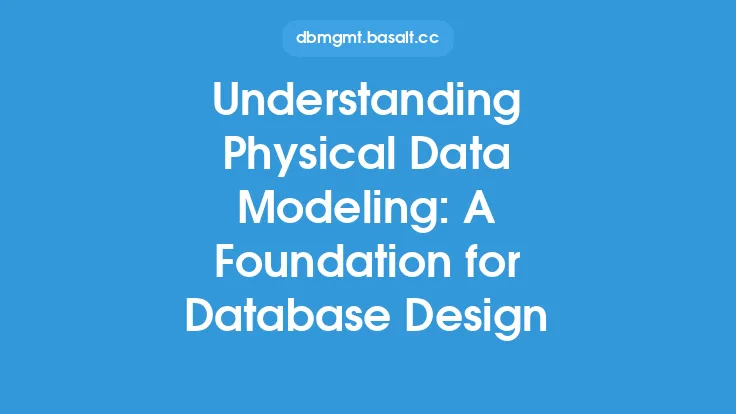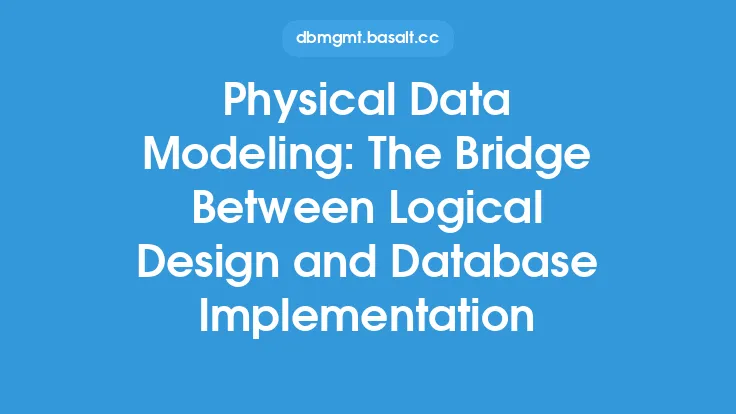Physical data modeling is a crucial step in the database development lifecycle, as it provides a detailed representation of the physical structure of a database. This stage of the development process involves transforming the logical data model into a physical implementation, taking into account the specific database management system (DBMS) and hardware platform that will be used. The goal of physical data modeling is to create a database design that is optimized for performance, scalability, and data integrity, while also ensuring that it meets the requirements of the application or system that will be using it.
Introduction to Physical Data Modeling Concepts
Physical data modeling involves a number of key concepts, including tables, indexes, views, and relationships. Tables are the basic storage units in a relational database, and they consist of rows and columns. Indexes are data structures that improve the speed of data retrieval by providing a quick way to locate specific data. Views are virtual tables that are based on the result of a query, and they can be used to simplify complex queries or to provide a layer of abstraction between the physical database and the application. Relationships between tables are defined using foreign keys, which are columns in one table that reference the primary key of another table.
The Physical Data Modeling Process
The physical data modeling process typically involves a number of steps, including analysis of the logical data model, selection of the DBMS and hardware platform, design of the physical database structure, and optimization of the database design for performance and scalability. The first step in the physical data modeling process is to analyze the logical data model, which provides a conceptual representation of the data and its relationships. The logical data model is used as input to the physical data modeling process, and it is transformed into a physical implementation that takes into account the specific requirements of the DBMS and hardware platform.
Database Design Considerations
When designing a physical database, there are a number of considerations that must be taken into account. These include the choice of data types, the design of indexes and views, and the optimization of database performance. The choice of data types is critical, as it can affect the storage requirements and performance of the database. For example, using a data type that is too large can result in wasted storage space, while using a data type that is too small can result in data truncation. The design of indexes and views is also important, as it can significantly impact the performance of the database. Indexes can improve the speed of data retrieval, but they can also slow down data insertion and update operations. Views can simplify complex queries, but they can also add overhead to the database.
Normalization and Denormalization
Normalization and denormalization are two important concepts in physical data modeling. Normalization involves organizing the data in a database to minimize data redundancy and improve data integrity. There are several levels of normalization, including first normal form (1NF), second normal form (2NF), and third normal form (3NF). Denormalization, on the other hand, involves intentionally deviating from the normalization rules in order to improve performance. Denormalization can be used to reduce the number of joins required to retrieve data, which can improve performance in certain situations. However, denormalization can also lead to data inconsistencies and other problems, so it must be used carefully.
Physical Data Modeling Tools and Techniques
There are a number of tools and techniques that can be used to support the physical data modeling process. These include data modeling software, database design tools, and data profiling tools. Data modeling software provides a graphical interface for creating and editing data models, and it can also generate the code required to implement the database design. Database design tools provide a range of features for designing and optimizing database structures, including indexing and partitioning. Data profiling tools provide detailed information about the data in a database, including data distribution and data quality.
Best Practices for Physical Data Modeling
There are a number of best practices that can be followed to ensure that physical data modeling is done effectively. These include following a structured approach to data modeling, using standardized data modeling notation, and involving stakeholders in the data modeling process. A structured approach to data modeling involves following a series of steps, including analysis of the logical data model, design of the physical database structure, and optimization of the database design for performance and scalability. Standardized data modeling notation provides a common language for communicating data models, and it can help to ensure that data models are consistent and accurate. Involving stakeholders in the data modeling process can help to ensure that the database design meets the requirements of the application or system that will be using it.
Conclusion
Physical data modeling is a critical step in the database development lifecycle, as it provides a detailed representation of the physical structure of a database. The physical data modeling process involves transforming the logical data model into a physical implementation, taking into account the specific DBMS and hardware platform that will be used. By following a structured approach to data modeling, using standardized data modeling notation, and involving stakeholders in the data modeling process, organizations can ensure that their databases are designed to meet the requirements of their applications and systems, while also optimizing performance, scalability, and data integrity.





